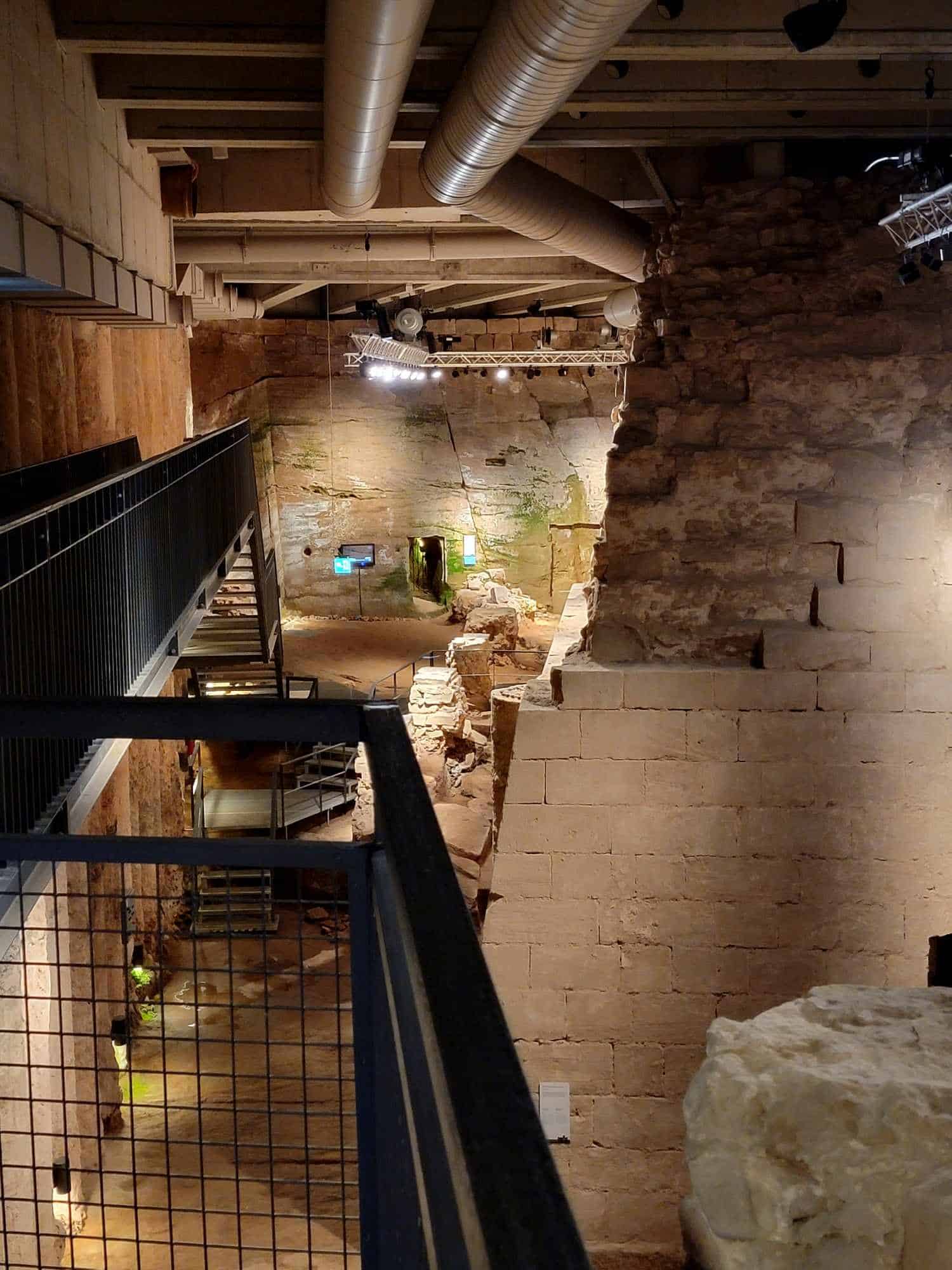Saarbrücken Castle, located in the Old Town of Saarbrücken, Germany, is completely invisible to passers-by! You’d never know you were walking on more than a thousand years of history. In order to tour these intriguing ruins and learn about them, you’ll have to gain access to them from inside the basement of the Saar Historical Museum! We absolutely loved exploring the old Saarbrücken castle, and the museum. It’s a really amazing experience to see these places that lay hidden for hundreds of years. A visit should definitely be on your list of things to do in Saarbrücken!
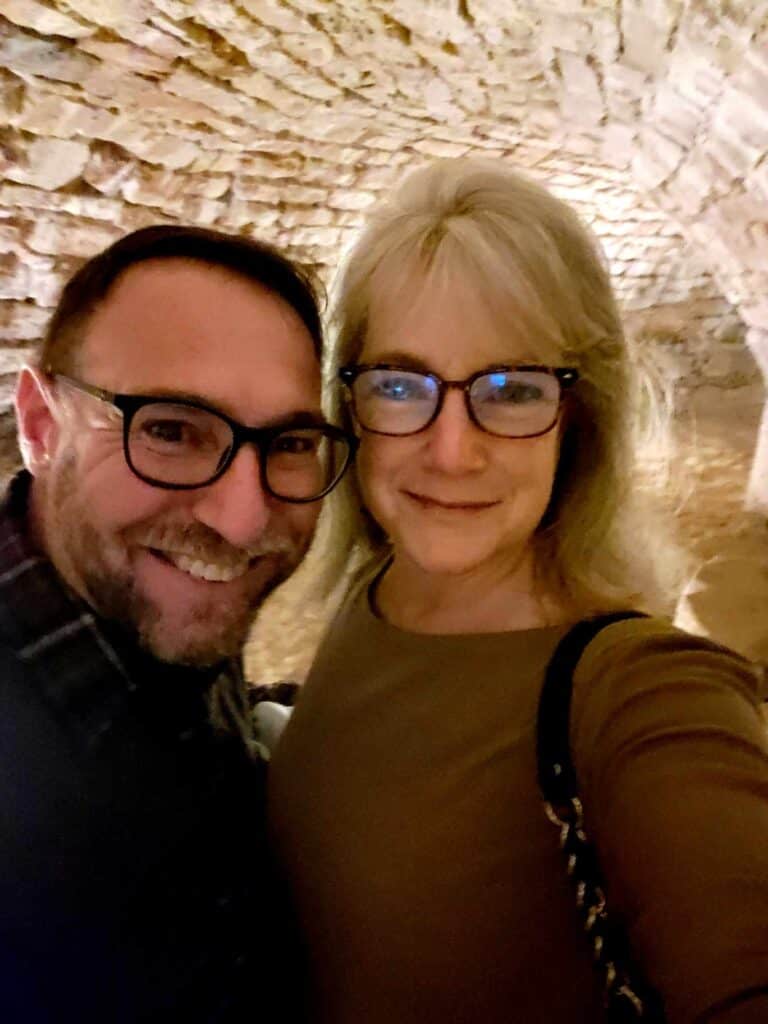
History of Saarbrücken Castle
Saarbrücken Castle was originally constructed, like almost every castle in Germany, on a natural outcrop of sandstone. The first castle mentioned on the site stood in 999AD! Over the passing millenium it was expanded, renovated, torn down, and rebuilt several times.
Here’s what it looked like in the 1600s, before one of its destructions. Pretty impressive!

Saarbrücken is located right on the German-French border, one of the most volatile and war-torn areas in all of Europe. Saarbrücken castle, like many buildings in the area, suffered varying degrees of destruction during wars and skirmishes, including the French Revolution, and both world wars.
In the early 1700s, the Medieval castle was torn down and replaced by an impressive Baroque palace commissioned by Prince Wilhelm Heinrich of Nassau-Saarbrücken. Designed by master builder Friedrich Joachim Stengel, construction transformed Saarbrücken castle between 1738 and 1748.
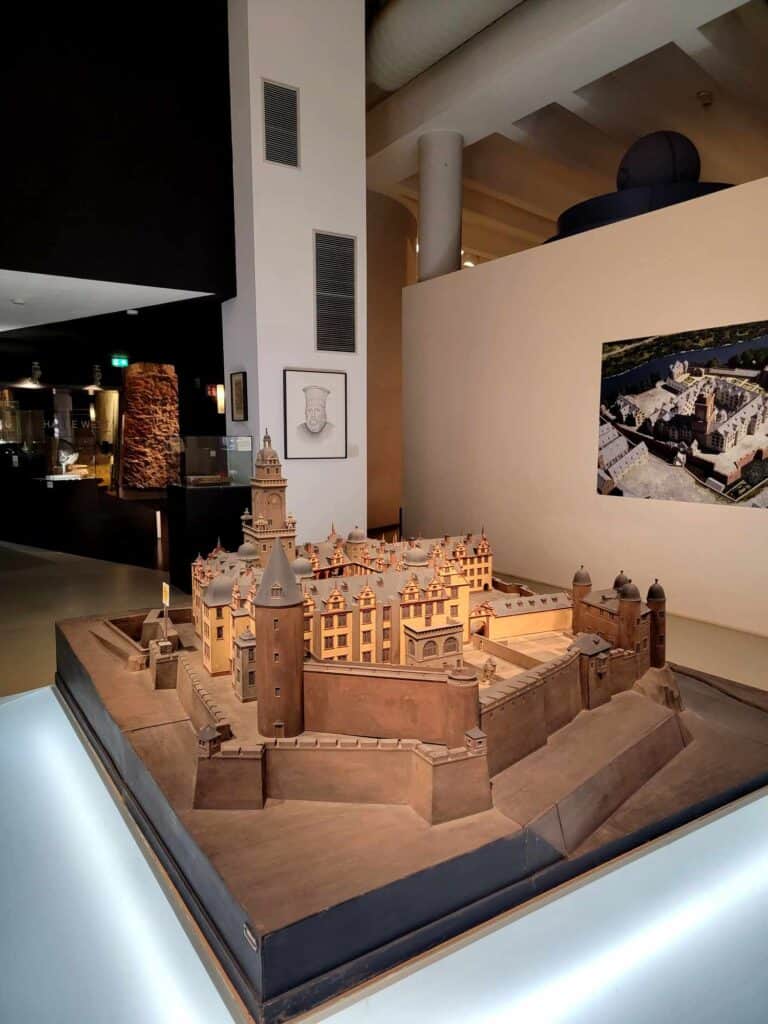
As a result of Saarbrücken’s first urban plan, Saarbrücken castle became the centerpiece of the Schlossplatz (Palace square) which also featured gardens, open space, and two nearby churches. You can still see the framework of this plan today as you walk about and enjoy the historical center of Saarbrücken.
The aftermath of the French Revolution meant huge upheaval to the area in the late 1700s. Saarbrücken was taken over by French troops and became part of France. During this time Saarbrücken castle fell victim to a massive fire. You can even see a painting of that fire inside the museum.

World War I brought more damage which necessitated repairs. And during World War II, the castle served as home to a Gestapo headquarters, which as you can imagine made it a prime target for Allied bombing raids. Almost 75% of the city was completely destroyed, and one wing of the castle was reduced to rubble.
But that wasn’t the end of its fascinating life story. In the 1980s Saarbrücken castle was completely rebuilt from the ground up in the style of the 18th century Baroque palace, but with a distinctly modern touch. The center block, designed by Gottfried Böhm, which connects the two wings is almost all glass. It retains the exact dimensions of the old section, but with a distinctly post-modern touch.
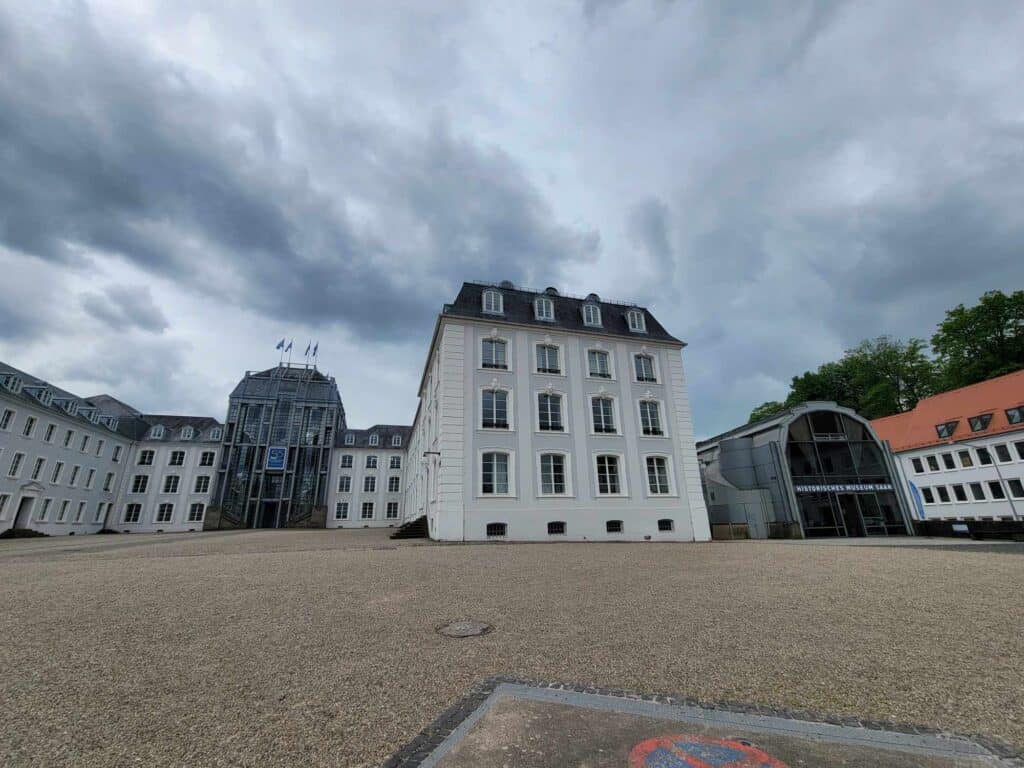
Today, the castle belongs to the people, and houses the Saarbrücken Regional Association, and serves as a popular venue for cultural events.
The Saar Historical Museum
In 1950, the Saar Historical Museum was founded and constructed next to the palace, to showcase the history of the region. Excavations during the museum’s construction (located where the stables once stood), and the rebuild of the castle revealed much of the building’s history, and unearthed many artifacts.
Construction work uncovered huge sections of the Medieval castle foundation, lower rooms, and infrastructure which have now been made accessible to the public and which you can visit today inside the museum!
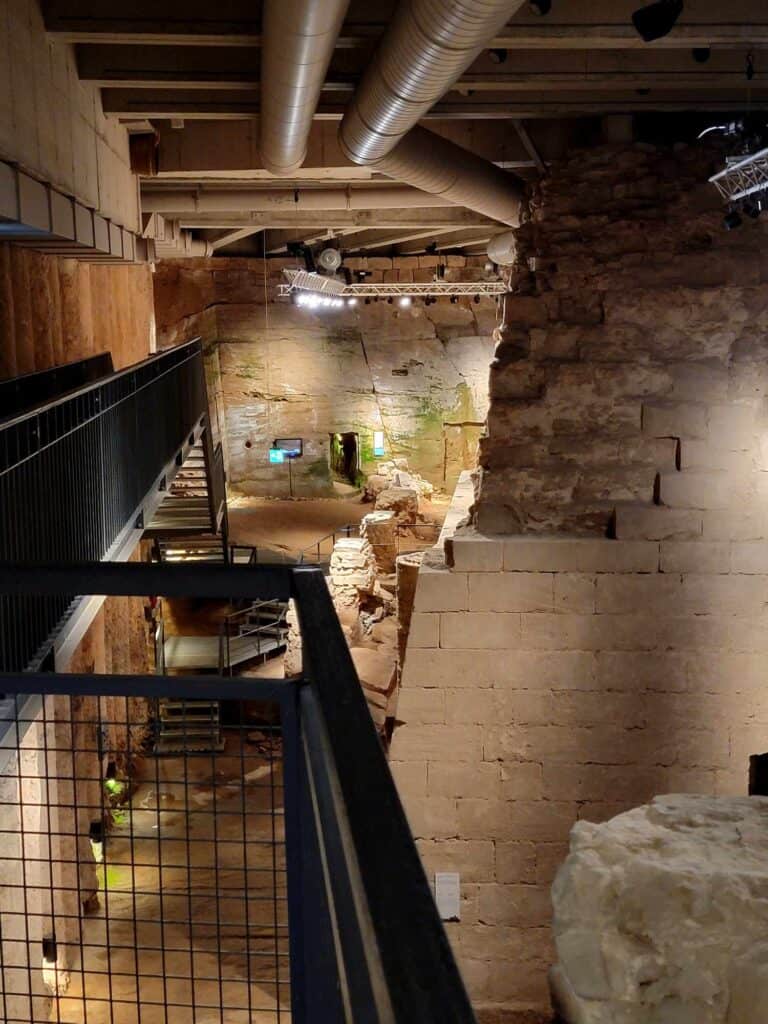
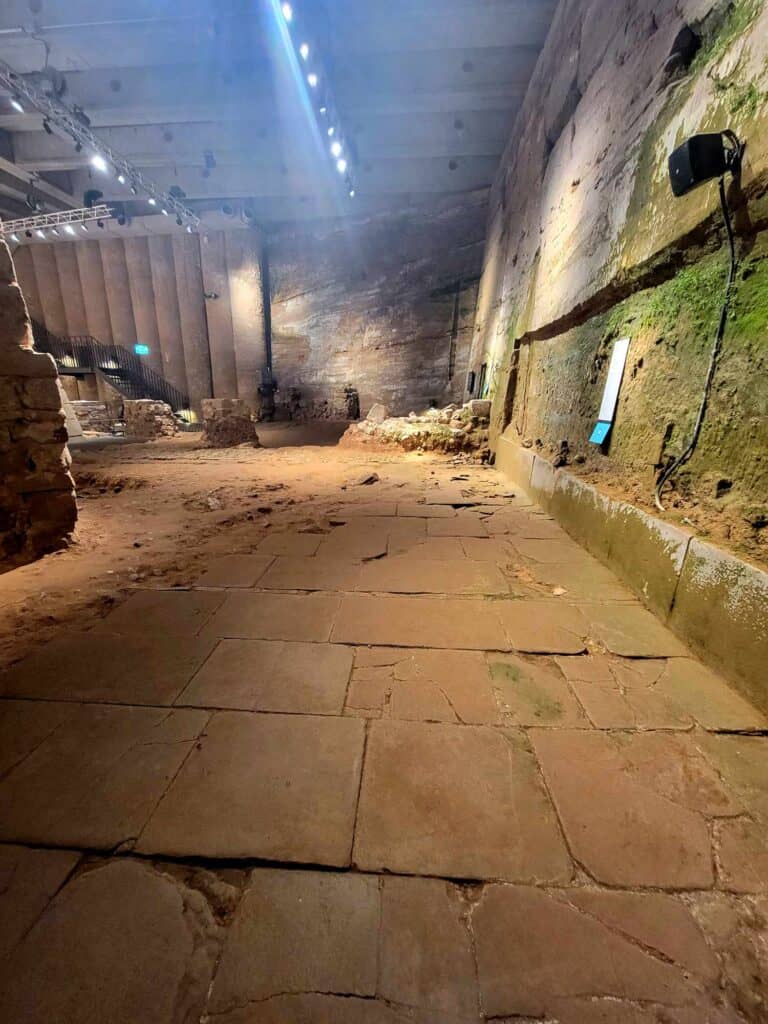
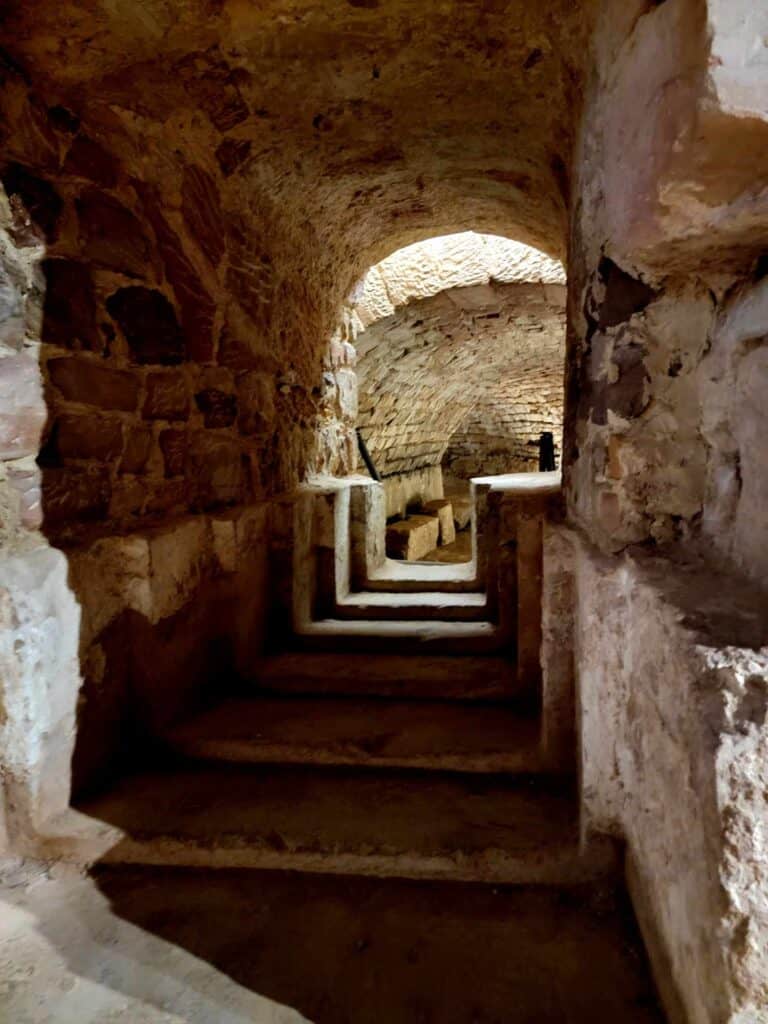
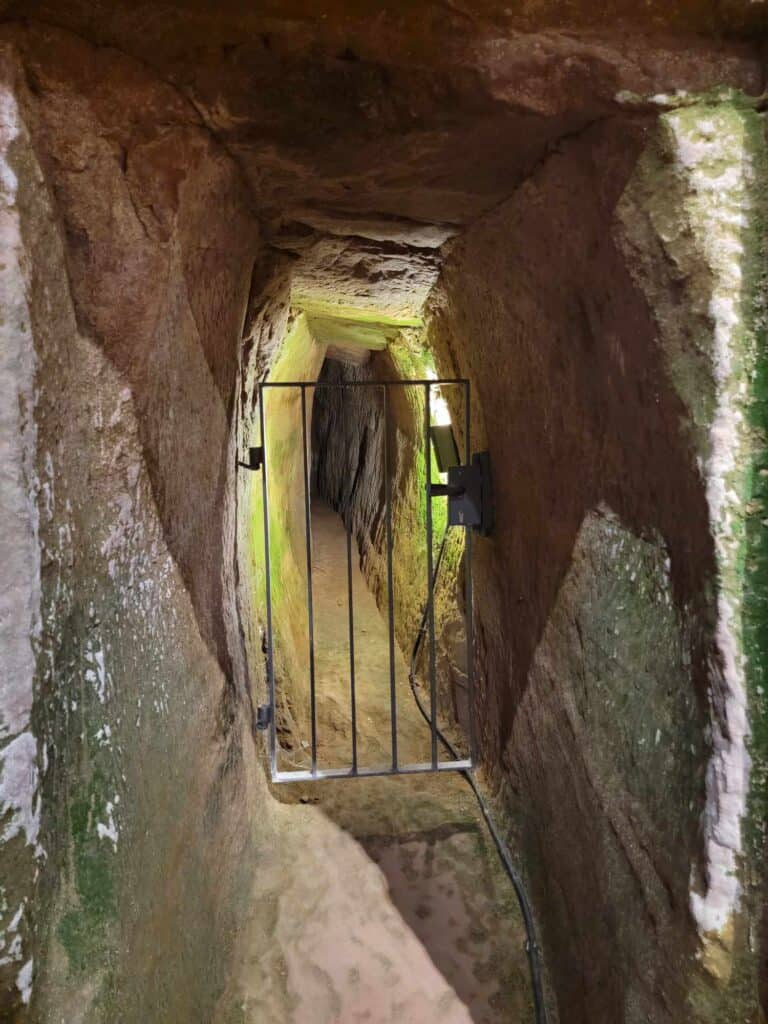

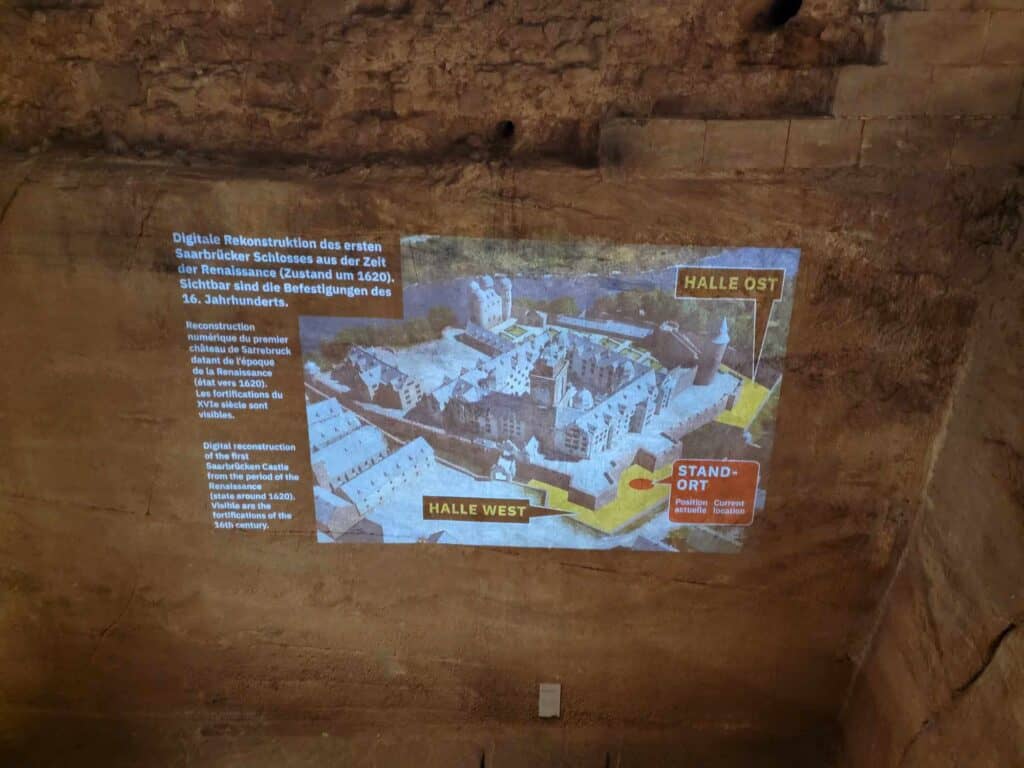
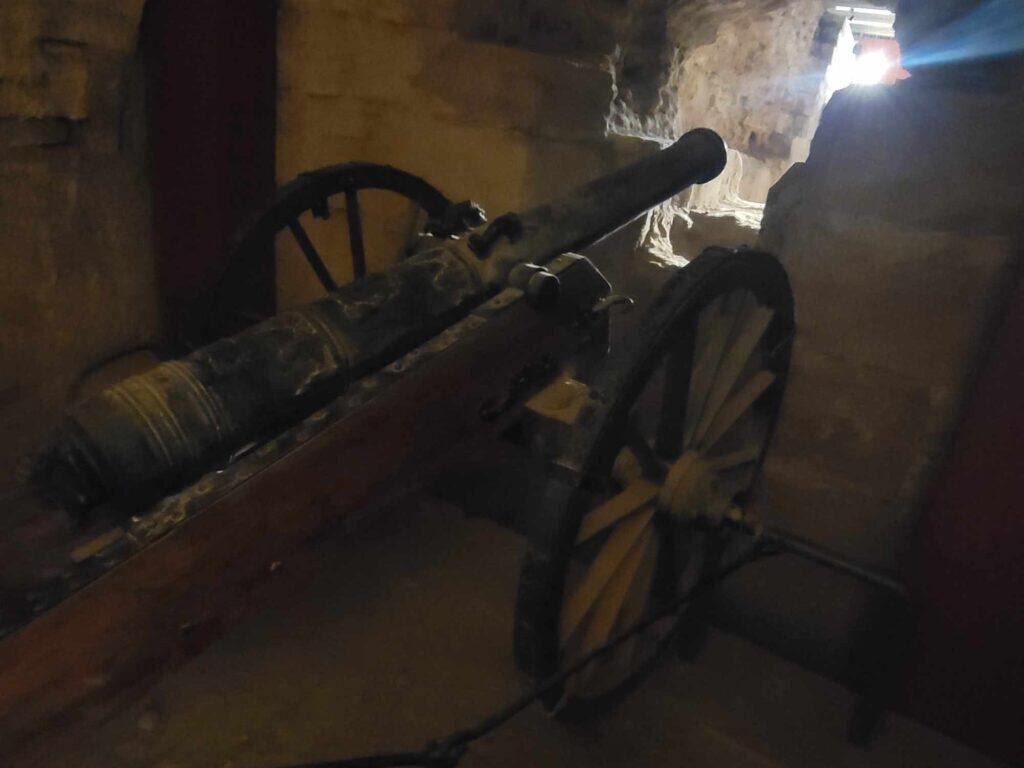
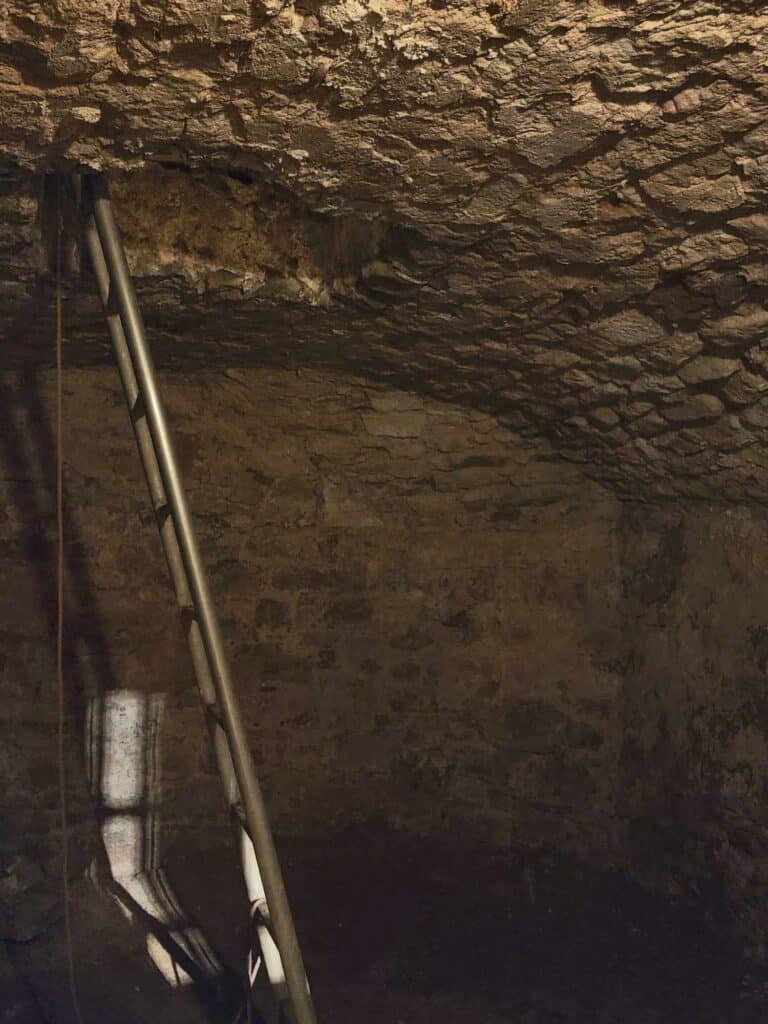
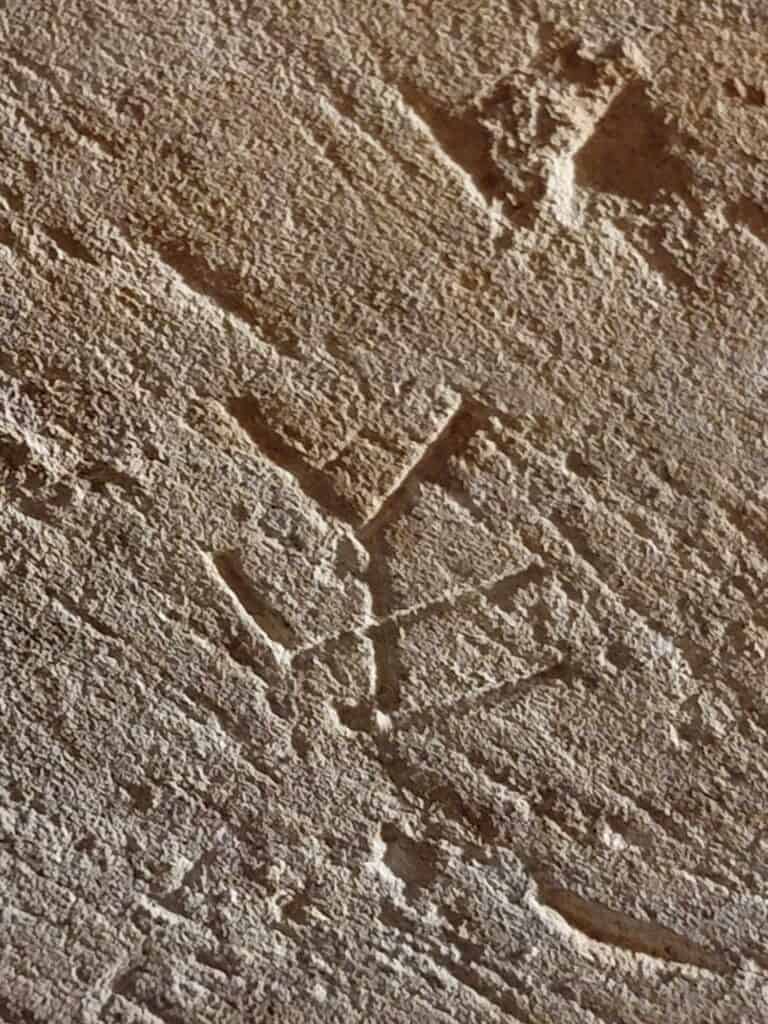
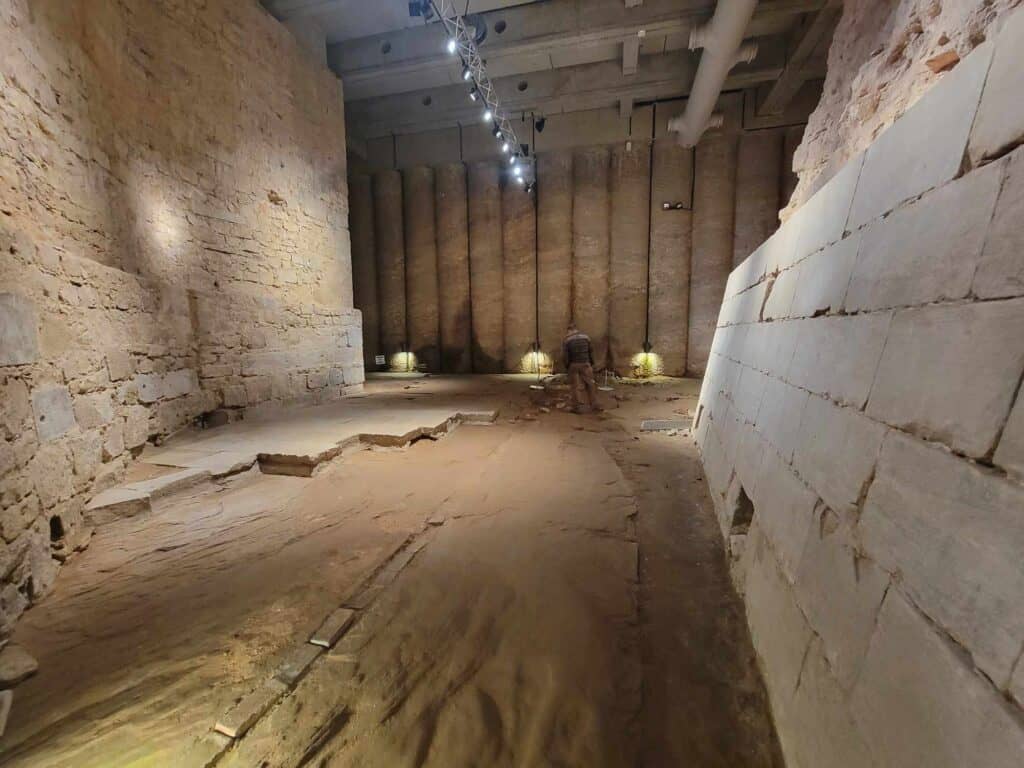
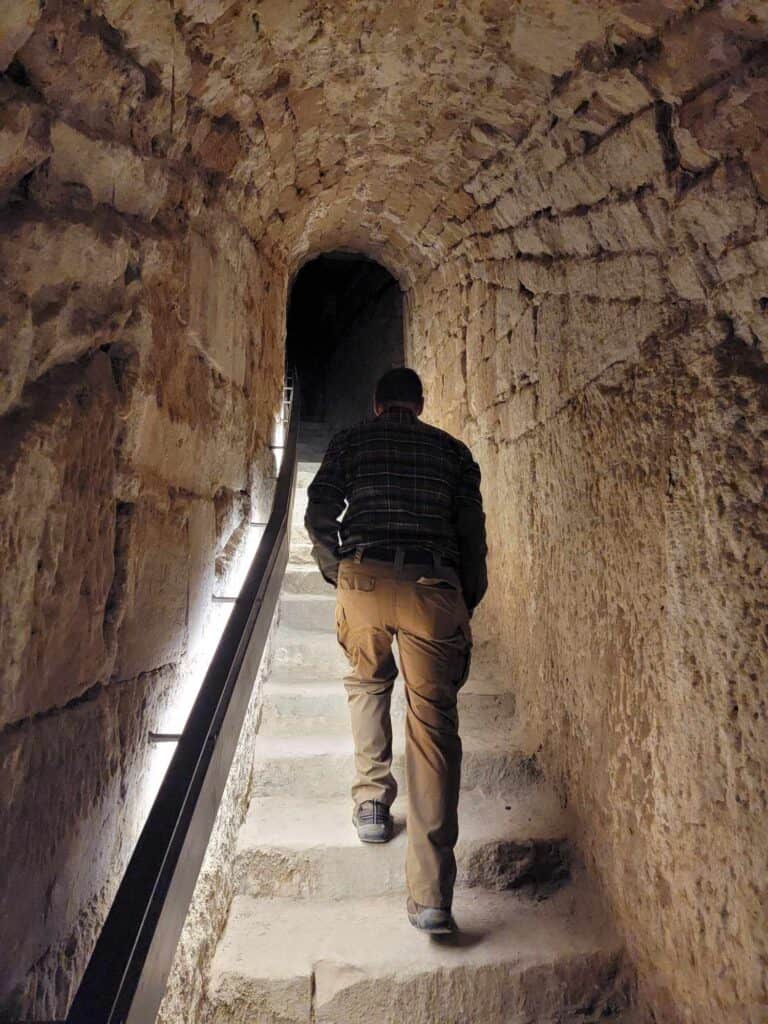
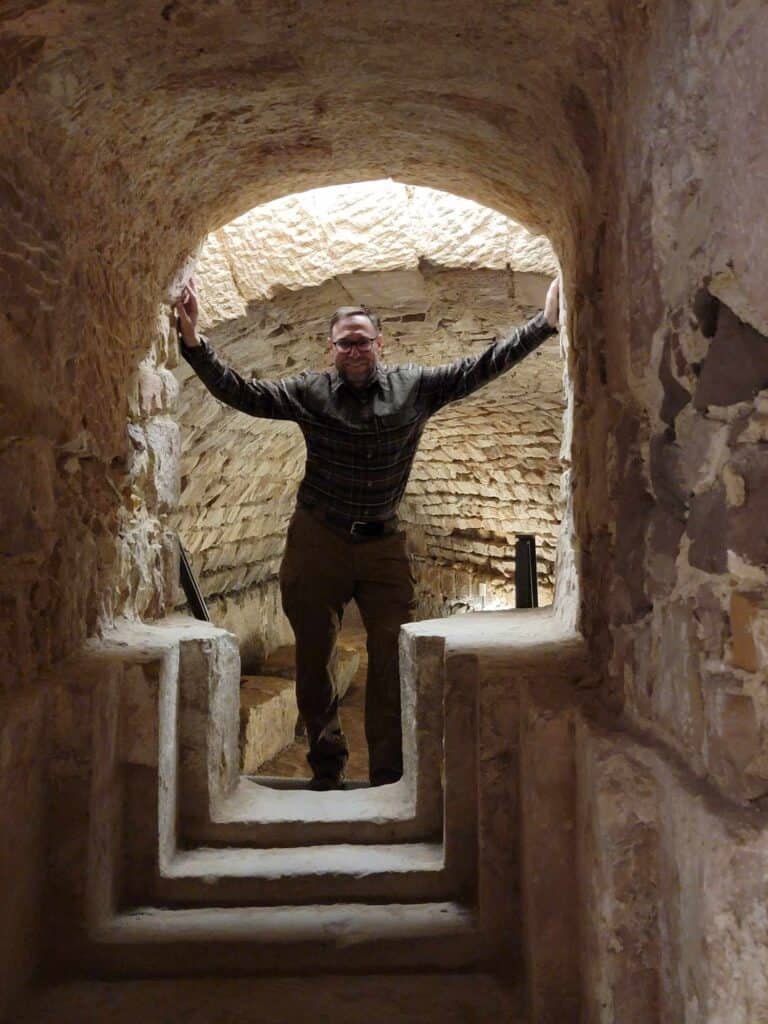
The museum takes you on a fascinating walk through the ages, beginning with the Medieval ruins, and carrying on through the history of Saarbrücken and the Saar region through the age of the German Empire, and both world wars.
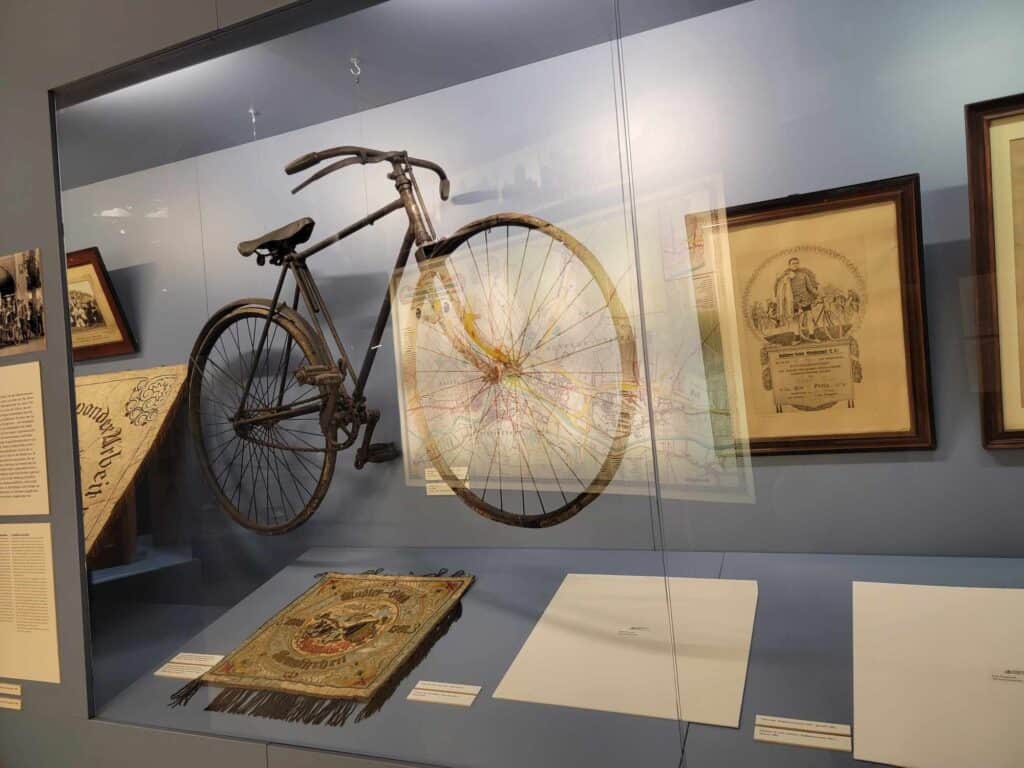
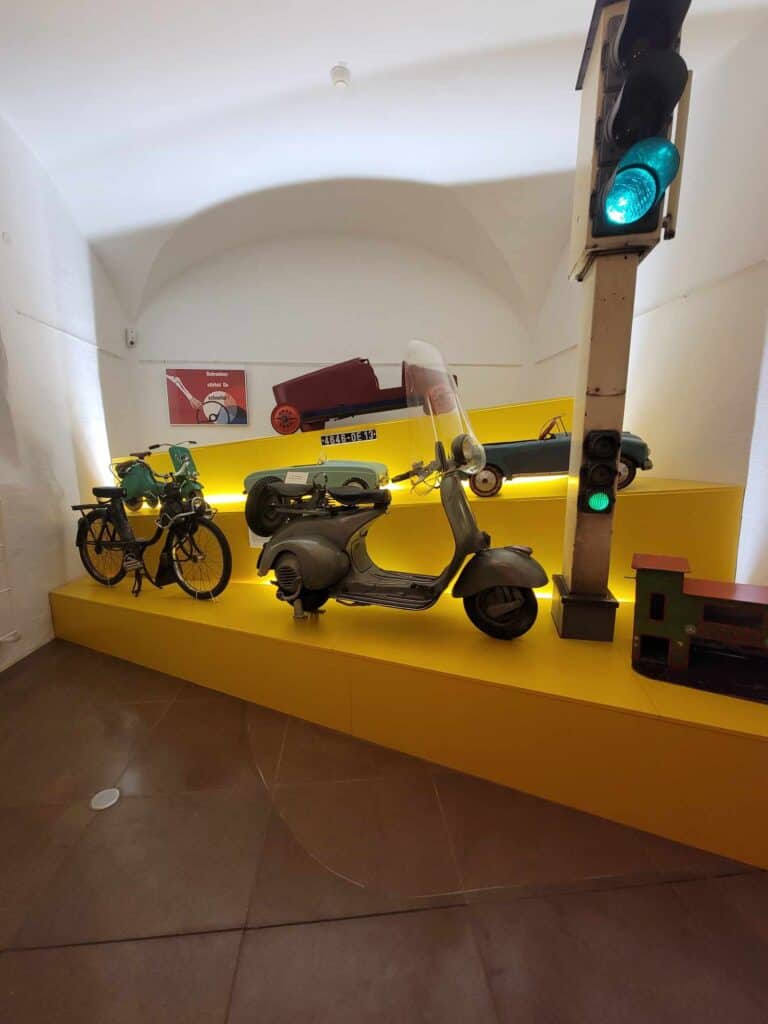
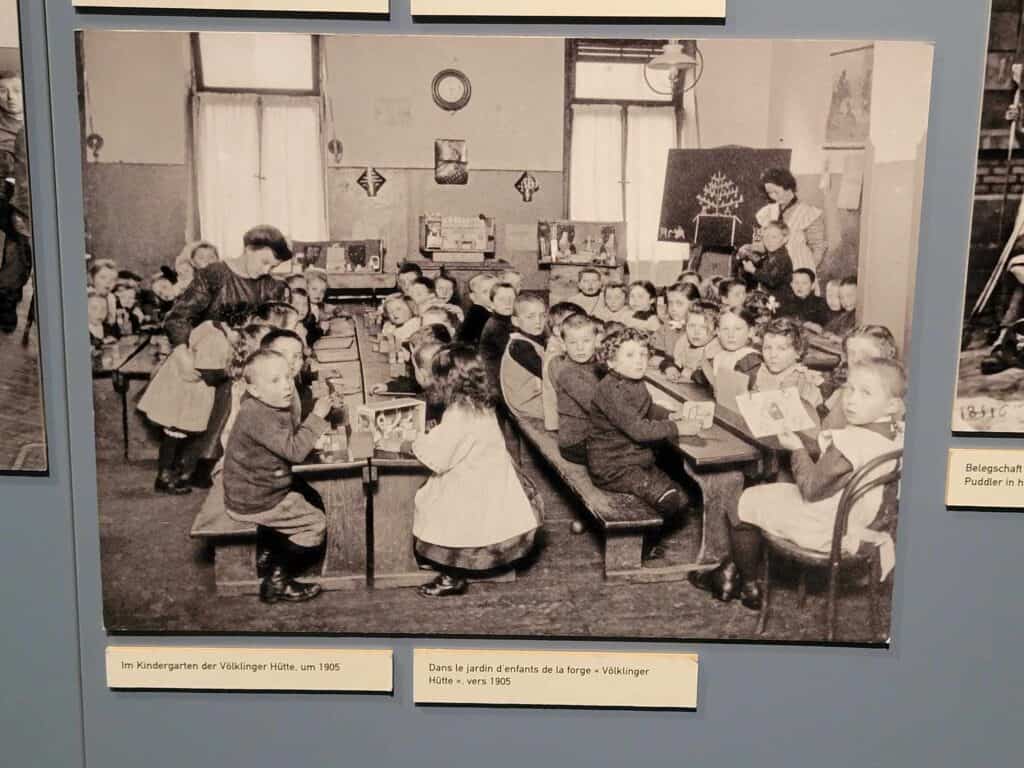
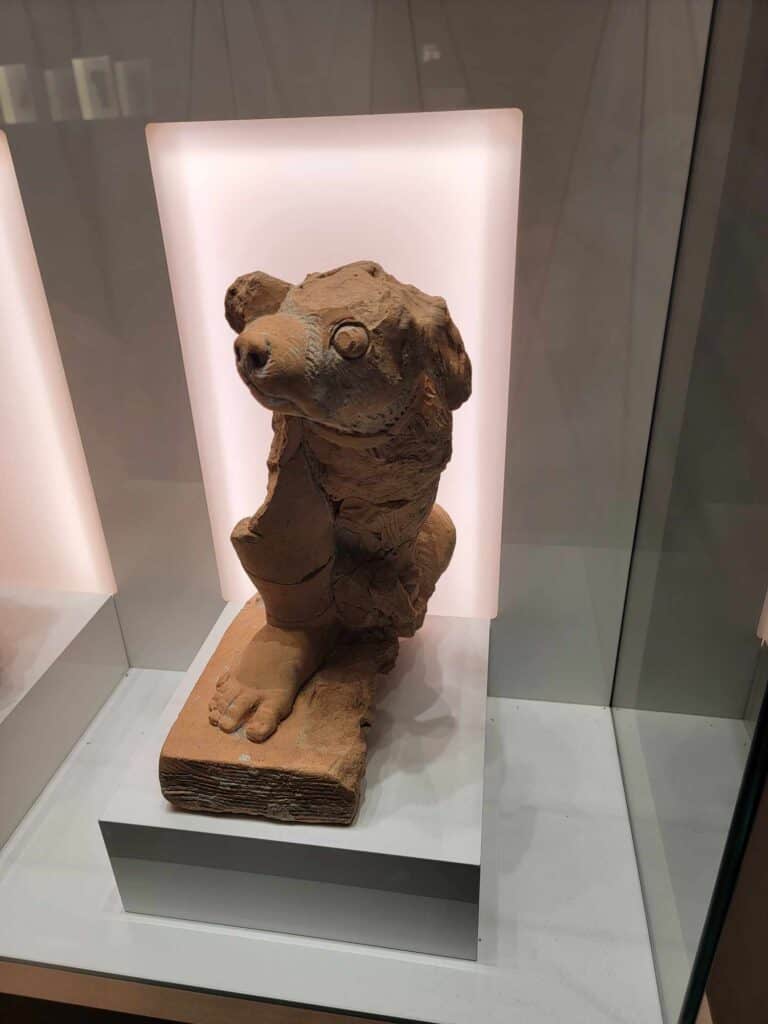
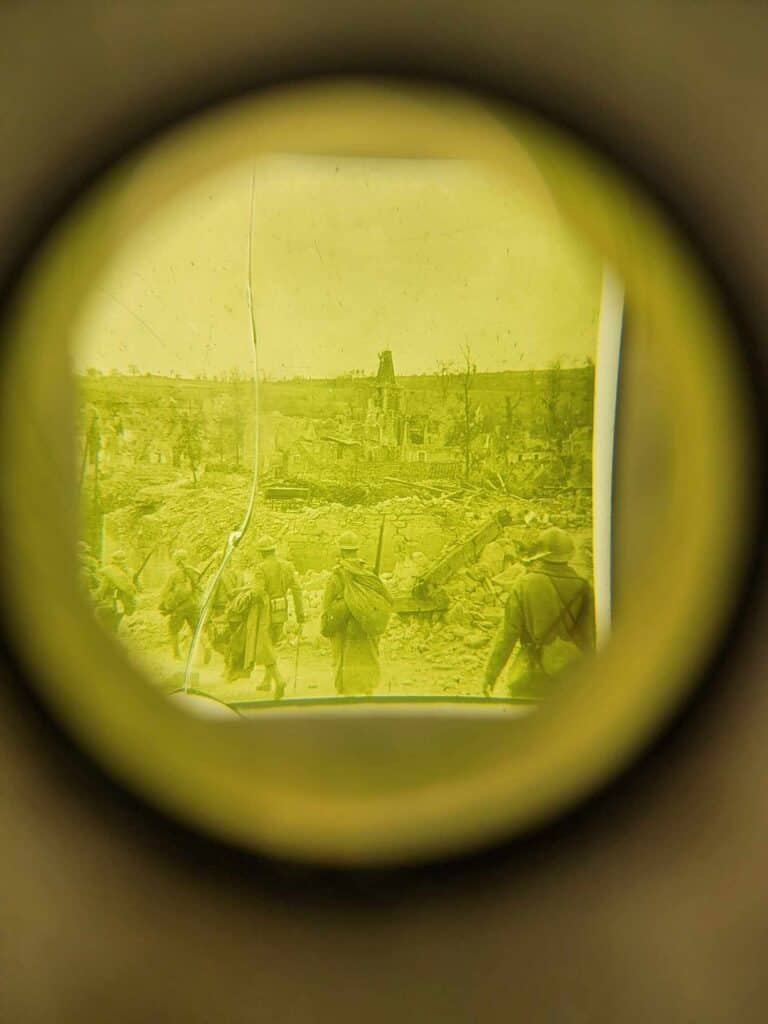
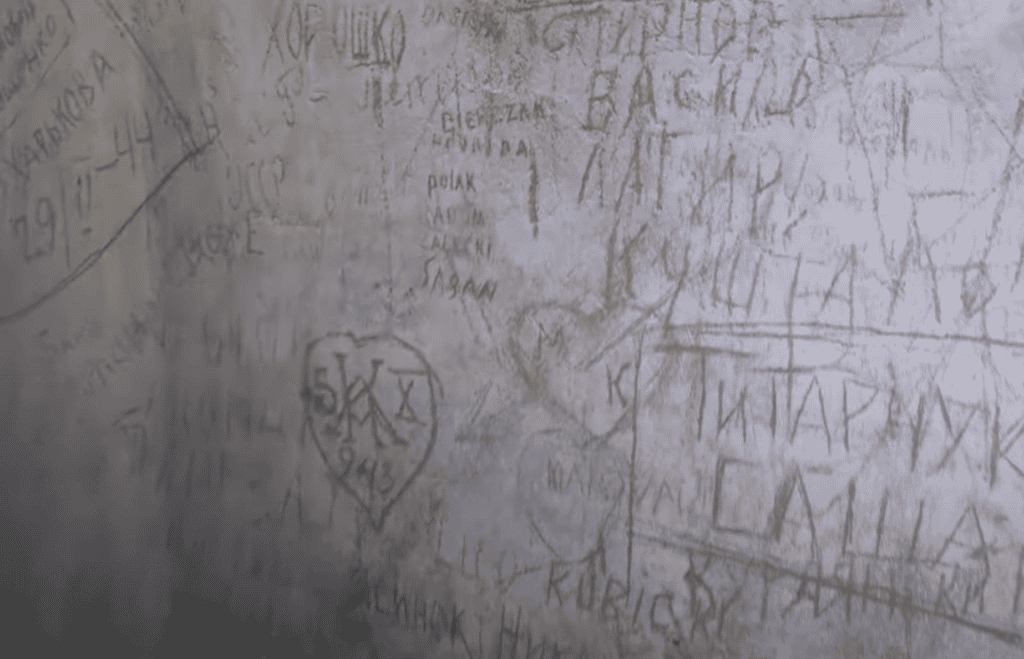
You’ll also find a Gestapo holding cell which has been meticulously preserved in place. The walls are covered with names, dates, and messages carved or written by those imprisoned there – a stark and heartbreaking reminder of the building’s chilling Nazi past.
The Invisible Monument
The castle foundations are not the only important historical monument that cannot be seen by the naked eye. In the square in front of Saarbrücken castle, there are 2,167 stone blocks included among the pavers which are known collectively as The Invisible Monument.
During the paving of the square from 1990-1993, local students and an art professor began carving the names of Jewish cemeteries that had existed before the Nazi era into some of the paving blocks. Then he would replace the block with the name facing the earth. When local authorities discovered what was happening, they put it to a vote, and decided to allow the process and to fund it.
You can read all about the fascinating history and process of the creation of The Invisible Monument at this link.
The Miserly Baker of St. Johann
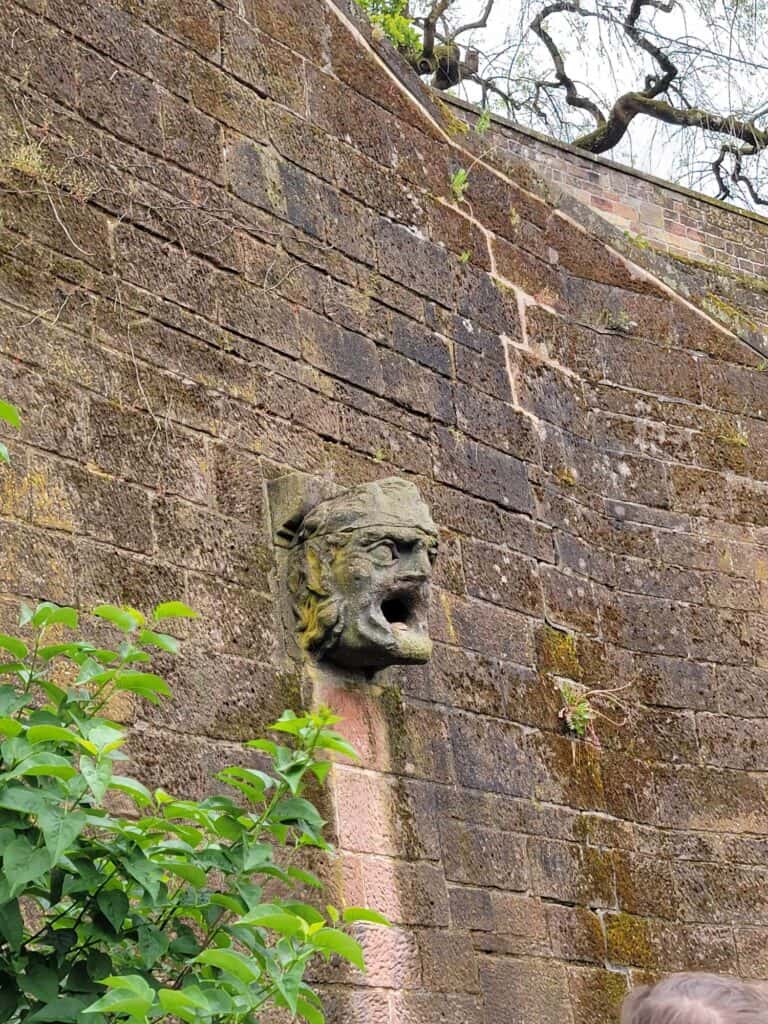
And your visit wouldn’t be complete without a visit to the “miserly baker” of St. Johann, a gargoyle that was formerly located on the Medieval Old Bridge for centuries. St. Johann, a town on the other side of the Saar River, became part of Saarbrücken in 1909; the Old Bridge is shorter that it once was after post-war reconstruction; and the castle wall itself had to be moved back 50 feet to make room for a new roadway! But the intrepid miserly baker still gapes at passers-by in his new home on the wall of Saarbrücken castle.
Sponsored content: this section contains affiliate links
Your Visit to Saarbrücken Castle and the Saar Historical Museum
Getting to the Museum
🚗 By car
- From Frankfurt – about a 2 hours
- From Kaiserslautern – about 45 minutes
- From Wiesbaden – about 1 hour 45 minutes
- From Strasbourg – about 1 hour 30 minutes
Public parking is available in several lots and garages in the surrounding area. Parking garages are noted on the map below in red, but you can also park on the street for up to three hours by using a parking machine located nearby.
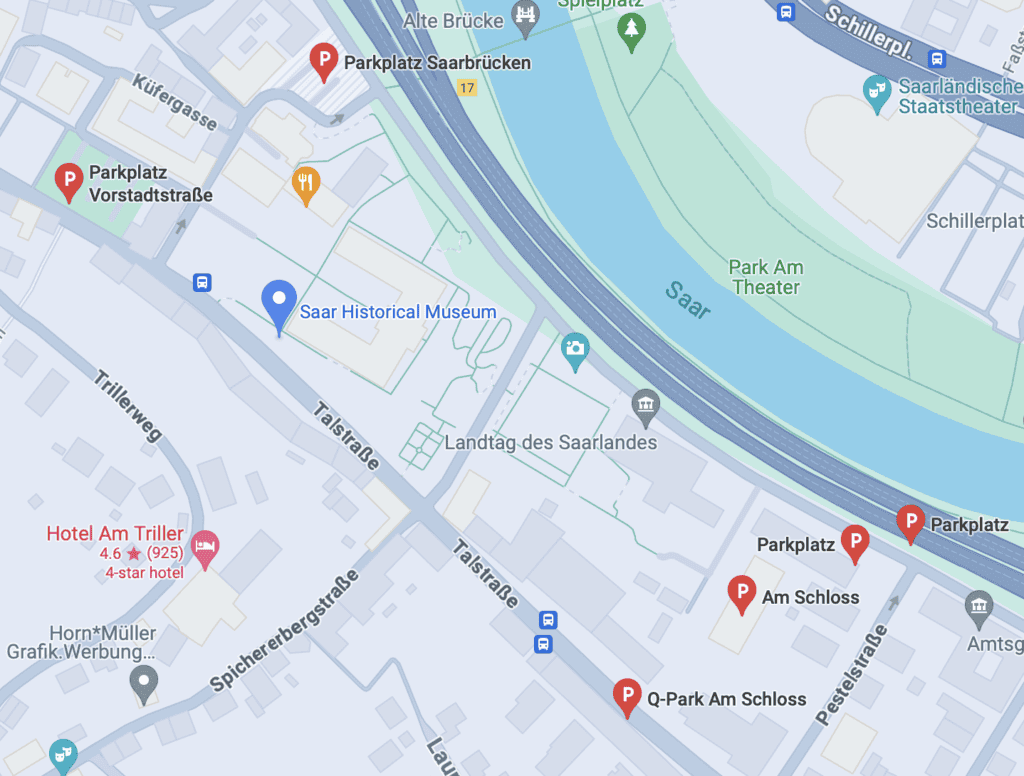
🚉 By train
It’s about a 20 minute walk from the main train station in Saarbrücken to the Saarbrücken castle and Saar Historical Museum.
- From Kaiserslautern – about 45 minutes
- From Frankfurt – about 2 hours
- From Stutthart – about 2 hours 10 minutes
- From Strasbourg – about 1 hour 55 minutes
Admission
The museum is closed on Mondays, but open the rest of the week. An adult ticket is €7. You can find details on hours of operation and holidays, and discounted tickets and free days at the Saaar Historical Musem website.
Signage
The signage in the castle ruins is in German, French, and English. In the museum, it’s less predictable so be sure to have Google Translate loaded and ready to go.
Terrain
Leave the stilettos and flip-flops at home for this one. The underground areas are very uneven, so wear comfortable closed shoes. The castle area is not wheelchair friendly, and the entrance has a large flight of metal stairs.
It’s still worth taking a peek inside and you’ll be able to see a large area of the moat, and the former ball court in addition to some windows, and impressive supporting walls, even if you don’t go down the stairs.
Children
Children must be at least 14 to visit the museum unaccompanied, and must be at least 16 to visit the underground fortress unaccompanied. Babies and little kiddos would do best in backpacks.
Time
Allow a couple hours to fully explore the underground castle, and the museum. It won’t take a full day, so you can also take some time to enjoy an unhurried meal at one of the surrounding cafés and restaurants, visit the Schloßkirche (castle church) just across the way, take a walk along the river, and just enjoy the beautiful city of Saarbrücken.
To learn about other amazing castles and castle ruins in southwest Germany check out these posts:
- 21 Best Things to Do in Kaiserslautern Germany
- 28 Best Day Trips from Kaiserslautern: Your Ultimate Guide
- Explore the Astounding Schlossberg Caves and Castle Ruins in Homburg
- Dinopark in Kaiserslautern: Great Fun for Everyone at the Gartenschau
- Ultimate Guide to Frankenstein Castle in Frankenstein Germany
- Hike to Hohenecker Castle in Kaiserslautern Germany
- Explore Fascinating Nanstein Castle in Landstuhl Germany
- Stahleck Castle in Bacharach: A Gorgeous Hike with a Dark Past
- Discover Charming Hohenbaden Castle Overlooking Baden-Baden
- A Real-Life Fairytale Castle in Germany – Discover Miraculous Burg Eltz
- Lowenburg Castle – the Remarkable Story of the Medieval Castle that Isn’t!
- Your Ultimate Guide to Visiting Nuremberg Castle: History, Tips & Must-Sees
- Völklingen Ironworks – Comprehensive Guide for Visiting This Remarkable UNESCO Site
